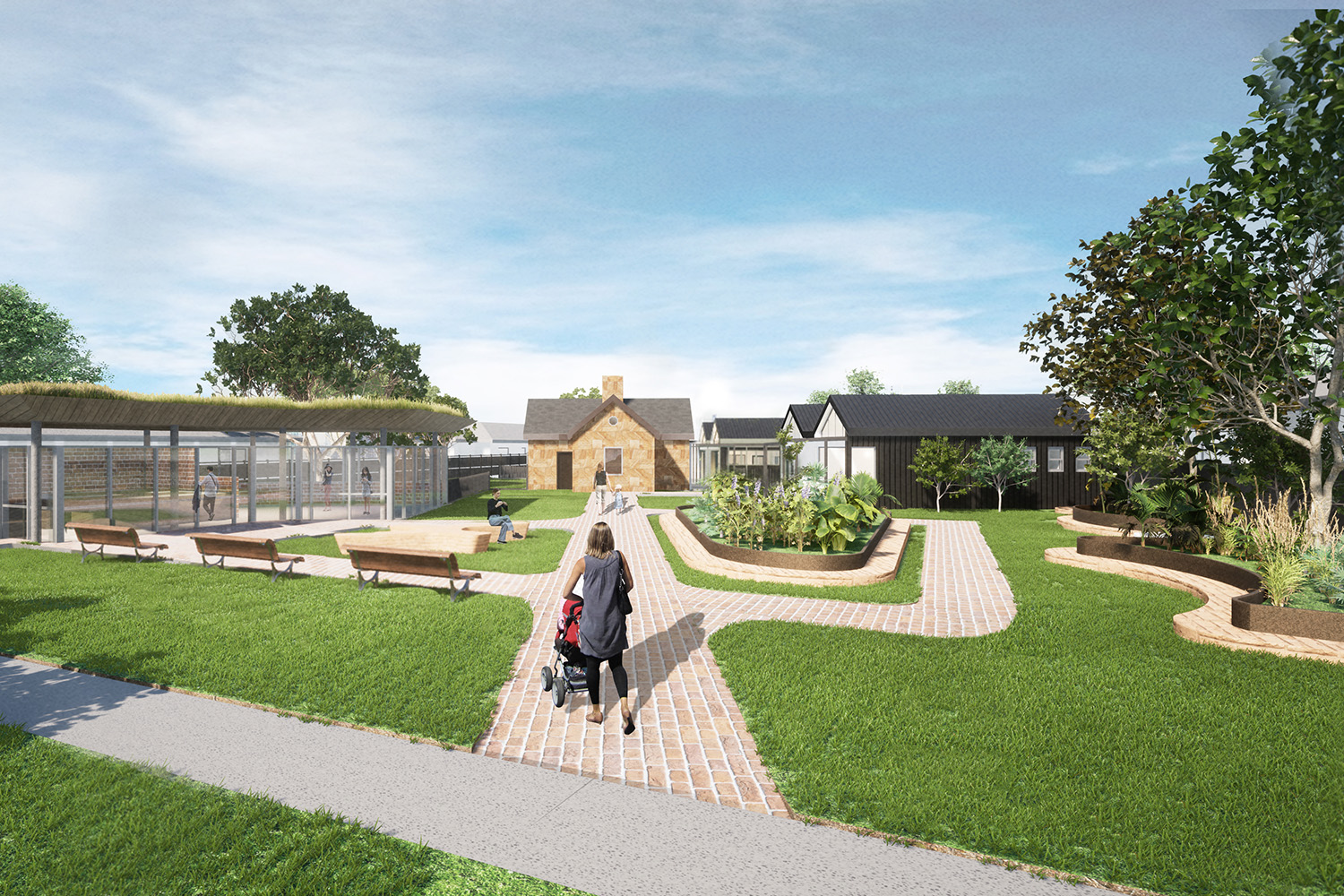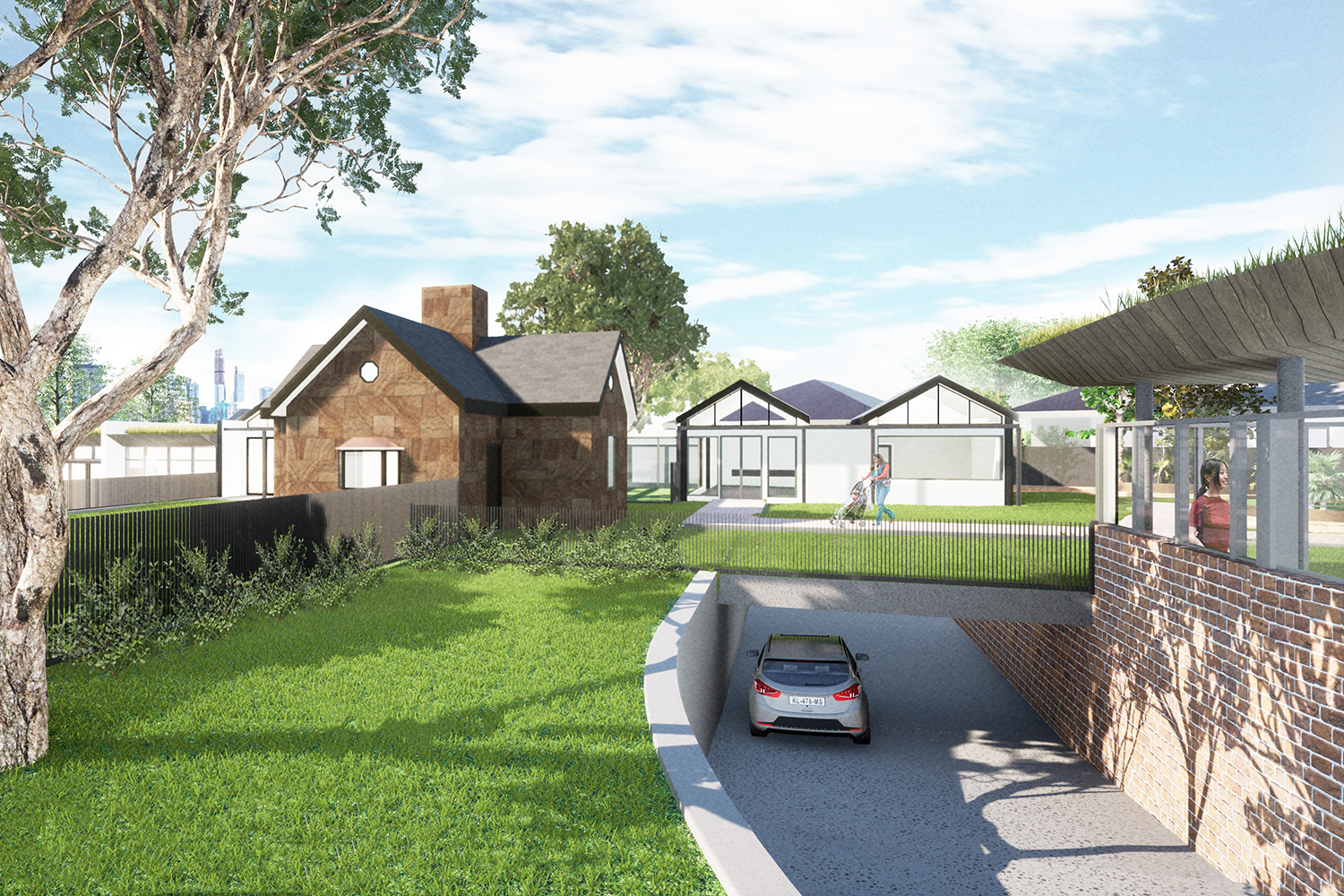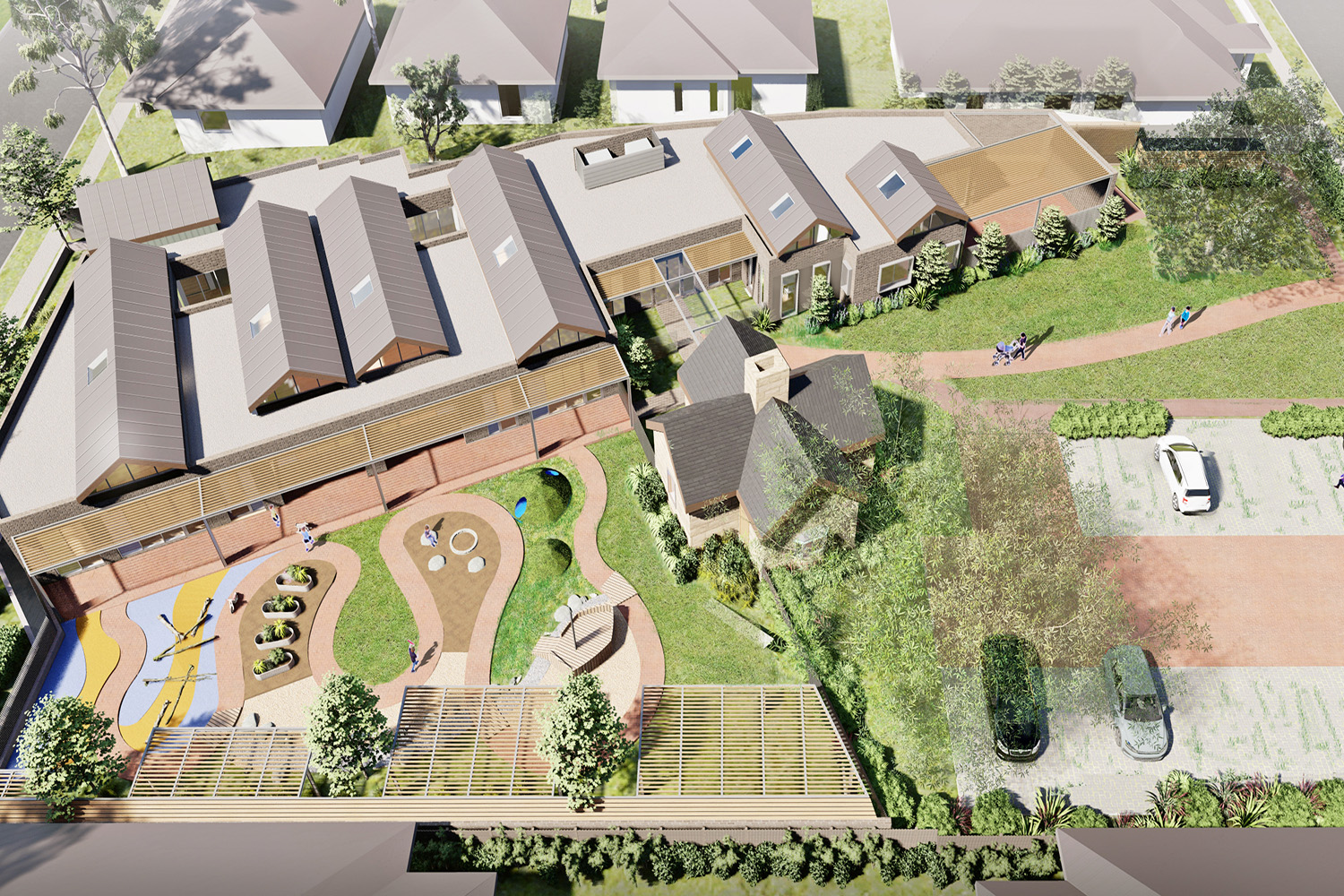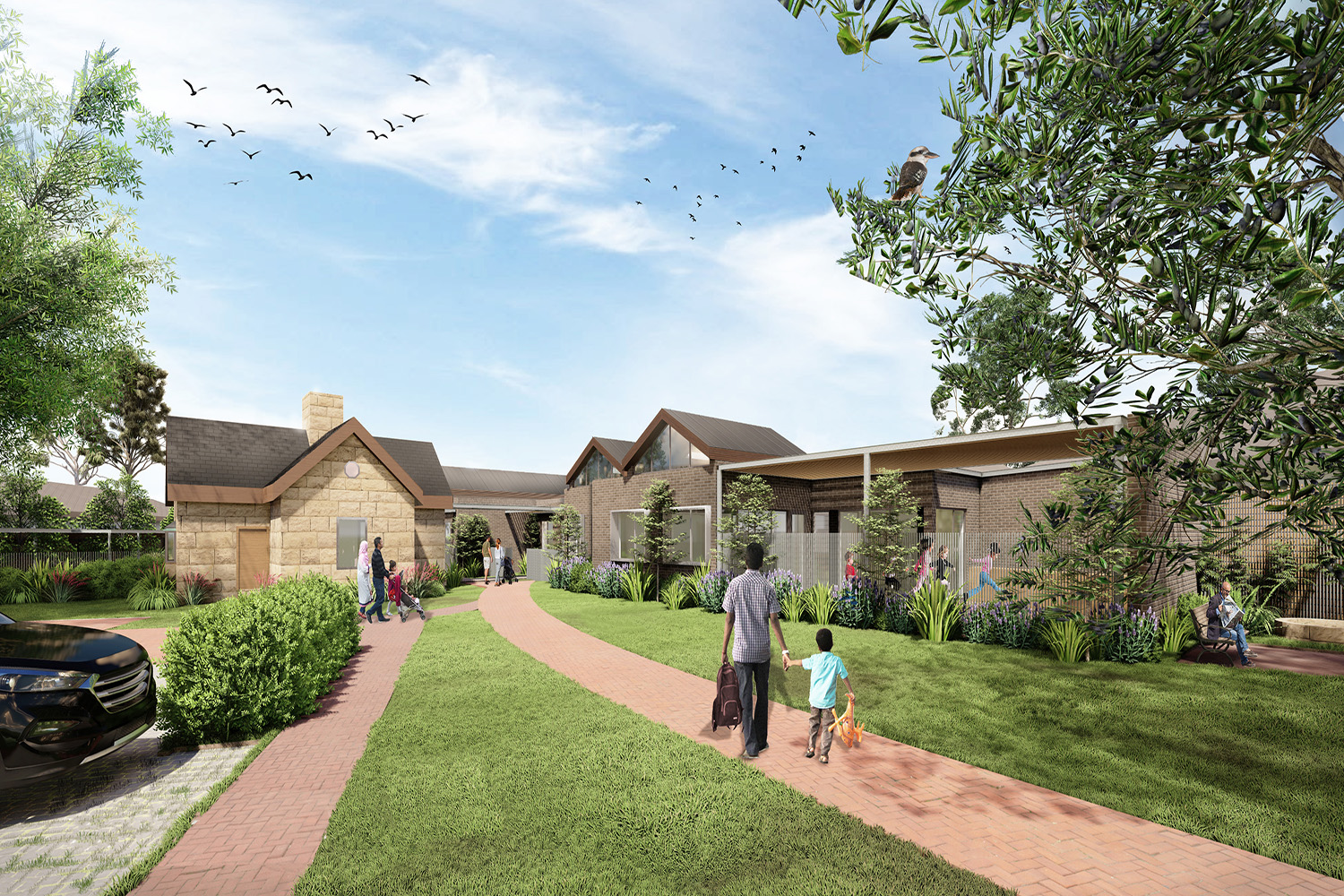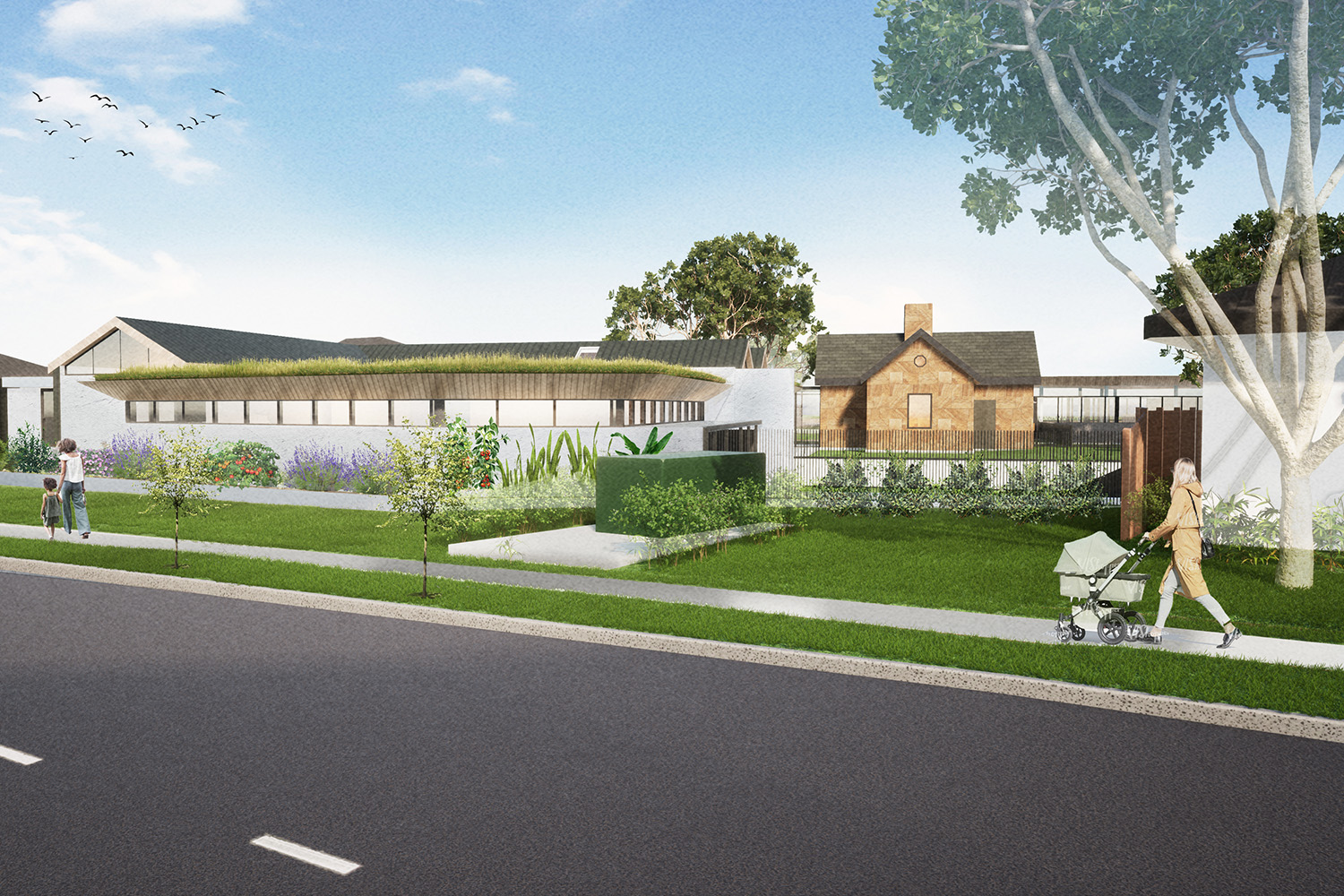The brief was straightforward: design a childcare centre to educate up to 80 kids and 15 staff. Include adequate parking with a drop-off area, playing grounds and a café.
Then came the hard part: the proposed site was already home to a dilapidated State heritage-listed, 19th century hunting lodge that somehow had to be incorporated into the childcare centre.
This sandstone landmark has State-level significance for several reasons, including the historical rarity of Australian hunting lodges and its unusual Gothic/ baronial styling. It is also built on land that was once part of Copenhagen Farm, a 1000-acre land parcel granted to Governor William Bligh in 1806.
The hunting lodge required extensive renovations and utility upgrades to bring it into a functional, safe condition. To comply with the onerous building restrictions on State heritage-listed properties, it was vital that our design preserve the building’s character, materials and structure to the greatest degree possible.
State regulations also require that new buildings on a heritage site honour their context with architecturally-sensitive designs that are proportionate and respectful of the site’s history and significance.
A relatively small lot size, a tight budget and various other constraints further complicated the project.
But Archisoul rose to the challenge, producing an elegant, accessible design that won rare praise from the State Heritage Council.
Some of the aspects that received special mention are:
Sympathetic design elements that preserve the visual presence of the Hunting Lodge within the site, both in scale and street orientation. We immediately noted the building’s auspicious bearing. Aligning exactly with the four cardinal points: north, east, south and west, the Lodge is a cruciform compass as well as a residence. Our design leveraged the building’s sacred geometry to ensure an uninterrupted view corridor, allowing the Lodge to visually dominate the site.
The centre’s roofscape plays an especially vital role in this design, seamlessly integrating the building into its physical and historical context. Dual pitched gables allow us to control the height and dominance of the architectural form from different angles while providing a strong visual connection to the Lodge’s Victorian profile. A turf roof and lower roofline along the northern side lighten the centre’s visual mass, softening its angular form and embedding it in the landscape.
The pavilion style café further activates this space, connecting the local community to its history and providing an additional income stream to maintain the heritage building.
Playing fields, native plantings and well-considered landscaping complete the design, transforming a colonial relic into a modern, child-friendly oasis.

